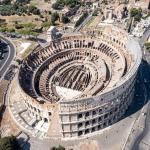The default assumption of non-LDS is that the unique LDS scripture in the Pearl of Great Price and the Book of Mormon are ahistorical. That is, they do not describe actual historical people, places and events. There never was a Nephi or a Moroni, and Jesus certainly didn’t visit the Lehites in the New World. Abraham, if he existed, did not do or write the things attributed to him in the Book of Abraham. Rejection of the historicity of LDS scripture is universally held by those who reject the authenticity of the LDS Church.
Likewise the default assumption of the vast majority of LDS is in the historicity of LDS scripture. The contents of the Book of Mormon and Book of Abraham–even if recorded, edited and transmitted by fallible humans–are commemorations of real people, places and events. The resurrected Jesus really did visit the descendants of Lehi in the New World. The Book of Mormon is not a parable, nor inspired fiction; it is history.
In the past half century, largely in response to secularizing indoctrination in graduate schools, a handful of LDS scholars have put for the claim that LDS scripture can be “inspired fiction.” That is, they reject the historicity of LDS scripture, but maintain that “fiction can be inspired.” (This is nothing new; it seems that each generation of scholars must undergo this trial by fire.)
I believe this position is an untenable position entailing both an equivocation and an obfuscation. It is an equivocation because of shifting the meaning of the world “inspired.” It is an obfuscation because it obscures the universally agreed reality that some fiction can be inspired (e.g. Jesus’ parables, and the Allegory of the Olive Tree in the Book of Mormon). The real question, perpetually sidestepped by the ahistoricists, is: is all scripture only fiction? The claim that Jesus told a fictional parable about the good Samaritan is quite a different matter than the claim that the apostles told a fictional parable about Jesus’ resurrection.
Thus we have three different positions:
1- Non-LDS = LDS scripture is not historical and not inspired
2- Liberal LDS = LDS scripture is not historical, but is “inspired” (in some broader sense of the term)
3- LDS = LDS scripture is historical and is inspired.
It is worth noting is that the liberal LDS position is held by only a miniscule fraction of all people, either LDS and non-LDS. The vast majority of people who reject the historicity of LDS scripture also reject the authenticity of the Restoration. The vast majority of people who accept the authenticity of the Restoration also accept the historicity of LDS scripture. Those few–very, very few–in the middle are trying to have their imaginary cake and eat it too. (Something that is possible only with imaginary cake, by the way.) I believe the inspired fiction theory is ultimately untenable and incoherent. The position contains too many internal contradictions; those who profess it in a self-reflective manner will inevitably be forced to conclude that the Restoration is not authentic, and indeed, that the claims of Joseph Smith himself are ahistorical.
So let me end with a little question. If there was no historical Melchizedek, and he did not have the priesthood of God, how are LDS claims to have a restoration of the Melchizedek priesthood any different from a claim to have the priesthood of Yoda, or the priesthood of Gandalf? How is an inspired fictional priesthood different from no priesthood at all?











